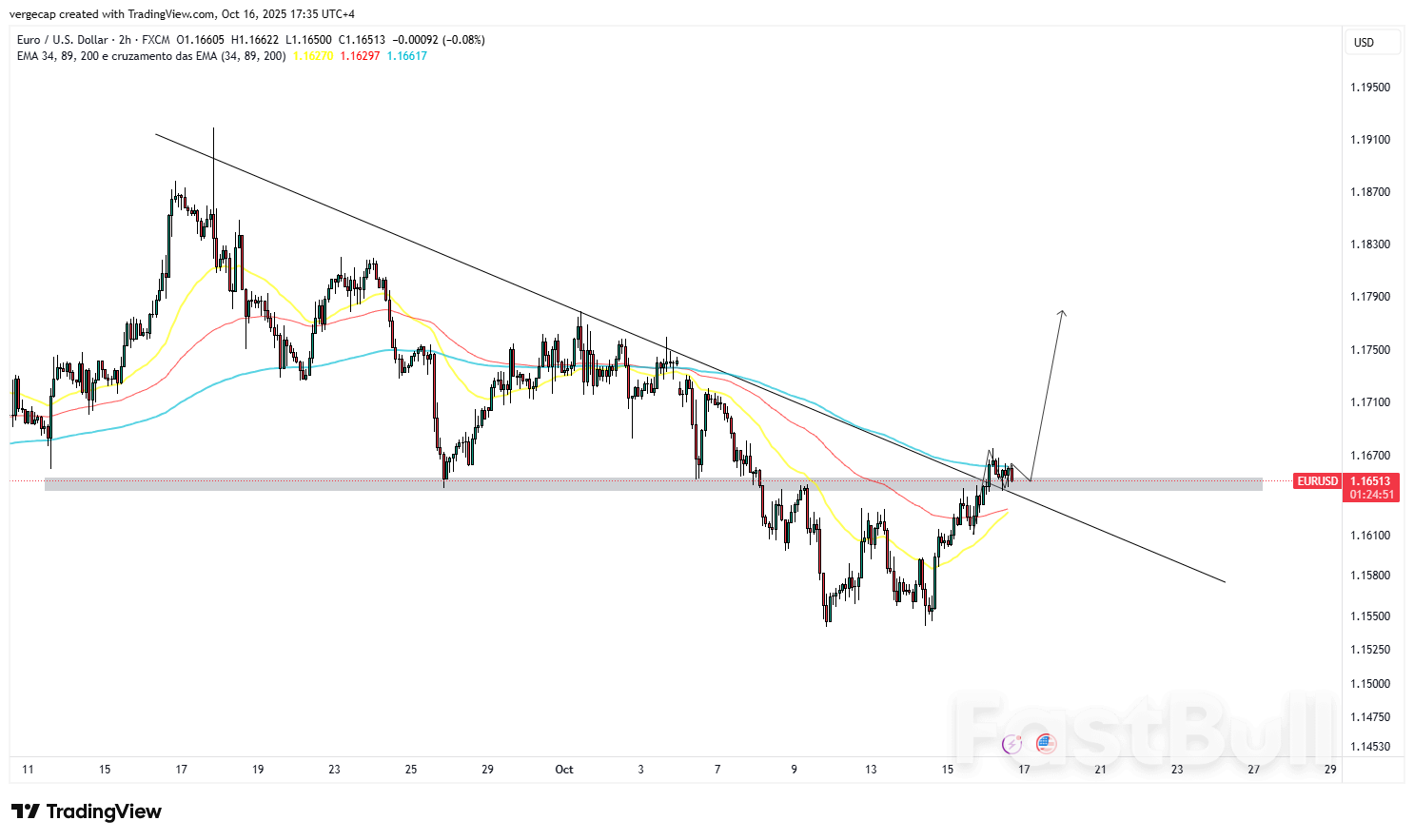The EUR/USD pair extended its upward trajectory for the third consecutive day on Thursday, trading near 1.1645 as investors sold the dollar amid renewed fears of a deepening trade rift between Washington and Beijing. The currency pair has been supported by a combination of growing optimism around Europe’s political stability and fading conviction in the U.S. dollar’s short-term resilience. Market participants are now turning their focus toward a series of speeches from Federal Reserve and European Central Bank (ECB) policymakers, including ECB President Christine Lagarde, which could provide critical clues on the monetary policy outlook on both sides of the Atlantic.
The greenback’s weakness has been evident across the board in recent sessions, as escalating geopolitical and trade tensions have dented investor confidence in the U.S. economic outlook. Renewed friction between the U.S. and China, coupled with signs of slowing inflation and a cooling labor market, has strengthened market speculation that the Federal Reserve may have to adopt a more dovish tone in the months ahead. This narrative has kept the euro in demand, with traders increasingly betting on relative stability within the eurozone despite lingering fiscal and structural challenges.
In France, political drama briefly captured investors’ attention after Prime Minister Sébastien Lecornu unexpectedly survived a second and final no-confidence vote in parliament on Thursday. The motion, spearheaded by far-right leader Marine Le Pen, secured only 144 votes, far short of the 289 required to topple the government. The left-wing La France Insoumise party’s refusal to side with the far right effectively spared Lecornu, allowing him to maintain power for now.
Lecornu’s decision to abandon President Emmanuel Macron’s contentious pension reform plan appears to have been a decisive factor in securing enough support to survive the vote. Still, his government faces an uphill battle to pass a fiscally conservative budget in a deeply divided parliament. The survival of Lecornu’s administration, even temporarily, has offered some degree of political continuity that markets often reward, particularly given the growing sense of instability across several Western economies. For the euro, this has removed a near-term source of uncertainty and contributed to the currency’s modest upward bias.
Across the Atlantic, tensions between the United States and China intensified after President Donald Trump stated in a televised interview that the U.S. is already “in a trade war with China.” The remark was widely interpreted as an escalation of rhetoric that could undermine investor sentiment and global trade prospects. The situation worsened further after Treasury Secretary Scott Bessent referred to China’s chief trade negotiator as an “unhinged wolf,” a comment that fueled concerns about the breakdown of diplomatic channels. While such remarks rattled markets, traders are cautiously optimistic that next week’s Trump–Xi summit could ease tensions and provide a framework for renewed dialogue.
Nonetheless, the damage to the dollar’s image as a safe-haven currency appears to be taking hold. The renewed volatility has left the greenback vulnerable, with investors reluctant to extend long positions ahead of any concrete developments in trade talks. Meanwhile, a softer tone from recent U.S. economic data has reinforced the view that the Federal Reserve could be forced to adopt a less aggressive stance, further eroding the dollar’s relative advantage.
In contrast, the eurozone has maintained a steadier policy footing. Although growth across the bloc remains uneven, signs of gradual stabilization—particularly in services and consumer sentiment—have underpinned the euro’s recent resilience. Traders now await Christine Lagarde’s remarks later in the day, as any indication of a more confident ECB could further solidify the euro’s position against the dollar.
Technical Analysis
From a technical standpoint, EUR/USD has displayed a steady recovery since rebounding from its recent lows near 1.1600. The pair is now testing the 1.1650 resistance area, a level that has acted as a key barrier in recent sessions. The fact that the price continues to trade above the 50-day exponential moving average (EMA50) underscores ongoing bullish momentum, reinforced by the presence of a double-bottom formation on the short-term chart—typically a bullish reversal signal.
Recent intraday movements suggest some consolidation as traders lock in profits, allowing overbought conditions on the relative strength indicators to ease. This short-term correction phase could offer the pair a chance to build additional upside momentum if 1.1600 continues to act as a reliable support zone. A clear break above 1.1650 would likely trigger further gains toward 1.1750, while a close below 1.1600 would suggest the rally is losing steam and could invite a deeper pullback.
The broader technical bias remains constructive, given the pair’s sustained trade above dynamic support levels. As long as the euro maintains its foothold above the 1.1600 area, the structure favors continued recovery, aligning with the view that the market is gradually shifting away from the dollar in favor of alternative majors.
TRADE RECOMMENDATION
BUY EURUSD
ENTRY PRICE: 1.1660
STOP LOSS: 1.1600
TAKE PROFIT: 1.1750













